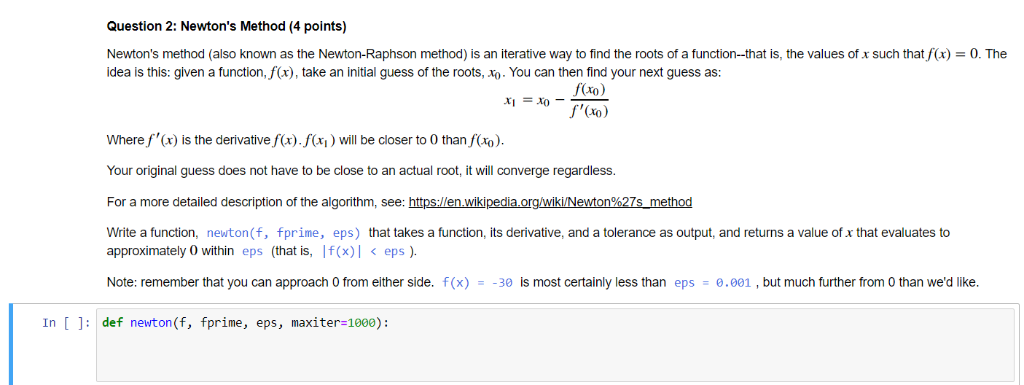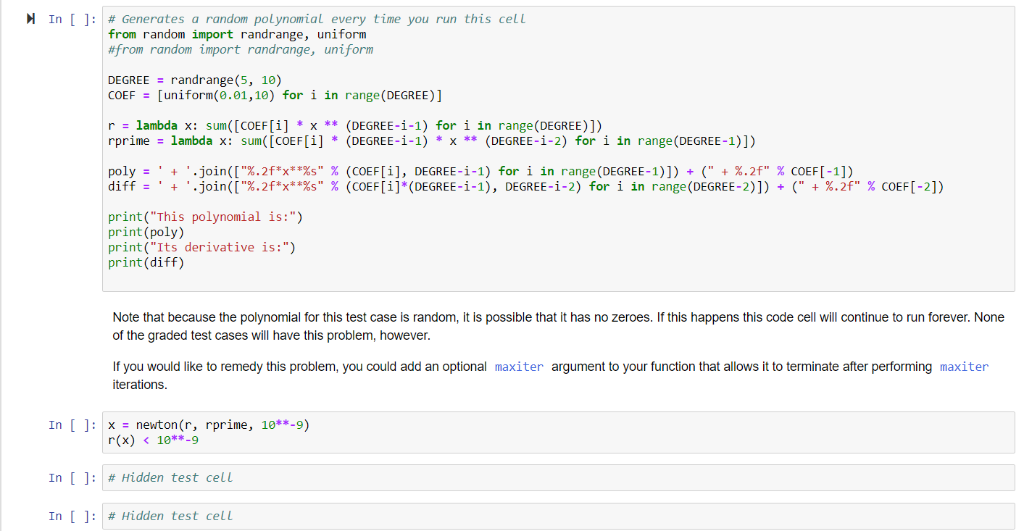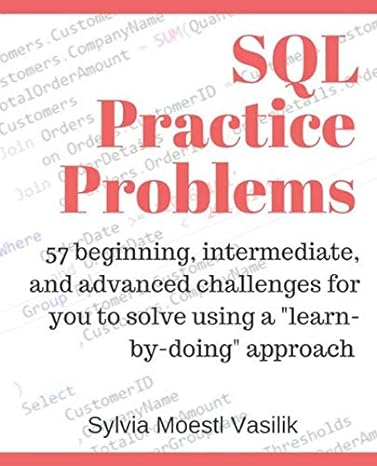Answered step by step
Verified Expert Solution
Question
1 Approved Answer
Question 2: Newton's Method (4 points) Newton's method (also known as the Newton-Raphson method) is an iterative way to find the roots of a function-that



Step by Step Solution
There are 3 Steps involved in it
Step: 1

Get Instant Access to Expert-Tailored Solutions
See step-by-step solutions with expert insights and AI powered tools for academic success
Step: 2

Step: 3

Ace Your Homework with AI
Get the answers you need in no time with our AI-driven, step-by-step assistance
Get Started


